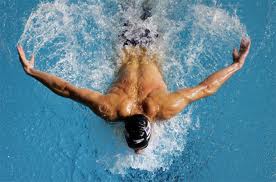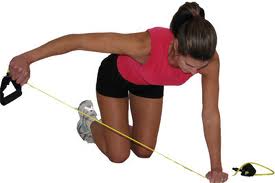Rotator Cuff – Impingement and Tears
- Home
- Shoulder
- Common Ailments
- Rotator Cuff – Impingement and Tears
Rotator cuff injuries are extremely common in people over 30. In the younger age groups the injury is likely to involve impingement (pinching) of the rotator cuff tendons and other structures around the shoulder joint. As we age the injuries can also involve degeneration of the rotator cuff which can lead to impingement and also tearing of the tendons. A direct fall onto the shoulder at any age can rupture all or some of the rotator cuff tendons.
The rotator cuff is a group of muscles acting around the shoulder (glenohumeral) joint. It comprises 4 specific muscles – Subscapularis, Supraspinatus, Infraspinatus and Teres Minor which all work together to produce most of the movements of the shoulder. There are also other muscles working around the shoulder blade (scapula), ribs and collar bone (clavicle) which help to support the function of the rotator cuff muscles.
Rotator cuff injury can be very complex and may involve inflammation or pinching of the tendons, bursa, capsule, nerve tissue or fascia in and around the joint. Degeneration of the tendon occurs from within the tendon itself and involves breaking down of tissue at cell level. Both cases can lead to a complete or partial tear of part or all of the tendons.
There are numerous possible causes of rotator cuff injury and only a detailed physiotherapy assessment can identify the major contributing factors in each individual case.
- Age. Common in over 30’s. Degenerative problems common in over 55’s
- Posture. It is thought that the position of your scapula, shoulder joint position and spine can influence the likelihood of developing rotator cuff injury.
- Activity. Sports people, especially tennis and badminton players and swimmers can be more susceptible to overuse injuries of the rotator cuff.
- Stiffness. A loss of particular movements within the joint can lead to increased pressure on the tendons.
- Arthritis. When a joint begins to wear it can form small bone spurs which can impinge on the surrounding soft tissues.
- Genetics. There are recent studies looking into the genetic influence on our tendon structure and there is possibly a genetic reason why some people suffer with rotator cuff impingement and tears more than others.
- Weakness or lack of muscle control. Certain muscles can become weak or lose the ability to control movement effectively. This may exert increased pressure on the other tendons producing pain.

- Pain. Ranging from mild to very severe. Impingement pain is often sharp in nature but may also ache at rest. The pain usually occurs with movements that involve lifting the arms forward and out to the side.
- Reduced movement. This can occur due to pain or because other structures start to stiffen. This can make normal daily activities uncomfortable or virtually impossible.
- Weakness. Pain affects the ability of muscles to work correctly and therefore muscles in and around the shoulder can weaken rapidly. This may also happen where a tear of the tendon has occurred.

Identifying the possible causes is essential in treating impingement effectively as each case is different. Painkillers can be helpful and also avoiding certain activities known to aggravate the structures such as lifting, repetitive movements, heavy gardening and heavy housework. Physiotherapy treatment involves initially ensuring full movement is restored. This can be achieved with specific stretching and mobilising technique and the implementation of an effective home exercise programme. Rehabilitation of the rotator cuff muscles can begin after this stage and involve strength as well as control and balance exercises.
If the pain is too severe a steroid injection into the area can help and allow exercise to begin.
In certain cases surgery is required to relieve pressure on the irritated structures before rehabilitation can occur.
When the tendon is torn it cannot repair itself. In many cases it is possible to compensate for this tear by strengthening the other muscles in the area. If this is not possible then surgery is requires to suture (sew) the tendon back together.

